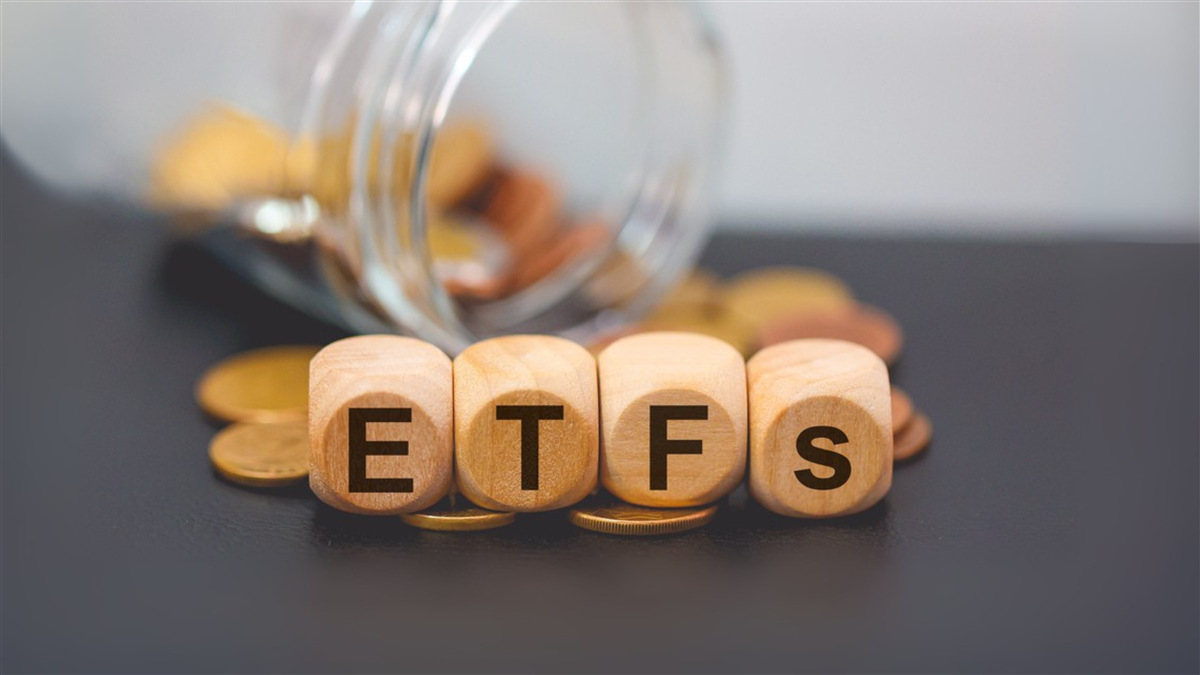SOURCE: AllianceBernstein
SUMMARY:
ESG in Action
Today’s bond market presents unique opportunities for responsible investing in the form of ESG-labeled bonds. These relative newcomers to the market can give their issuers an ESG halo and even lower their cost of debt. Investors like them because they can deliver a measurable impact. But as the market for these bonds grows, so too do the challenges. In this paper, we describe our process for assessing ESG-labeled bonds and show that, by systematically applying this framework, investors can help set a gold standard for the market, avoid surprises from controversy and greenwashing, and potentially generate more alpha over time.
- Nearly US$800 billion ESG-labeled bond issuance in 2021
-
1%–5% Range of “greenium,” March 31, 2022
-
0.20 Median ownership concentration score for green bonds, compared with 0.06 for conventionals
DESCRIPTION:
Authors
Salima Lamdouar| Portfolio Manager—Sustainable Fixed Income
Patrick O'Connell, CFA| Director—Fixed Income Responsible Investing Research
Tiffanie Wong, CFA| Director—Fixed Income Responsible Investing Portfolio Management; Director—US Investment-Grade Credit
Increasingly, today’s fixed-income market presents unique opportunities for responsible investing in the form of environmental, social and governance (ESG) labeled bonds. These relative newcomers to the market can give their corporate, sovereign or securitized issuers a welcome ESG halo and could even lower their cost of debt by attracting new investors. In turn, investors are drawn to ESG-labeled bonds because they can deliver a measurable—and meaningful—social or environmental impact.
Unfortunately, as demand surges for responsible investing choices and the market for ESG-labeled bonds balloons, so too do the challenges. It’s tricky for investors to select bonds with the right structures and features that will meet their ESG promises as advertised. That’s why investors and their bond managers must have a disciplined framework for assessing ESG-labeled bonds.
Bigger, Broader, Better: The Rise of ESG-Labeled Bonds
Heightened demand for responsible investing has led to an explosion in issuance of ESG-labeled bonds such as green bonds, social bonds and sustainability-linked bonds. Nearly US$800 billion in ESG-labeled bonds were issued in 2021, accounting for about one in four investment-grade and high-yield new issues in Europe alone (Display). A wider variety of companies is embracing ESG-labeled bonds too, many within industries that are increasingly faced with challenges—and opportunities—to lower the carbon intensity of production processes and consumer goods, such as chemicals, auto, telecom and consumer products.
ESG-labeled bonds come in different forms. If they're true to their label, project-based bonds such as green bonds, sustainability bonds and social bonds use the proceeds for a specific environmental or social initiative. In contrast, sustainability-linked bonds aren’t associated with a project but instead target firmwide key performance indicators (KPIs); if they come up short, the coupon rate typically resets higher, providing incentive for the issuer to meet its targets or incur a higher cost of debt.
ESG-labeled bonds benefit their issuers in several ways. In addition to the good will they create—the ESG halo effect—ESG-labeled bonds can be cheaper to issue than comparable conventional bonds. High demand may reward companies with more modest coupons, which can lower the cost of the debt over the long run.
As a result, ESG-labeled bonds tend to offer investors slightly lower yields compared to conventional bonds. We think the trade-off is worthwhile when we consider what well-structured bonds can achieve.
Most obviously, they can make a meaningful difference to something investors believe in, like addressing social inequities in their communities or supporting the transition to net zero. They also give investors, bankers and other stakeholders a say in how companies operate, even helping to steer corporate behavior in a better direction. Based on transcripts from earnings calls and other presentations, more investors than ever are openly challenging leadership to adopt stronger and more transparent ESG philosophies and actions throughout their operations.
Additionally, ESG-labeled bonds may experience smaller drawdowns in volatile markets, helping to buffer portfolio performance. Historically, the premium for ESG-labeled bonds versus conventional bonds—known as a “greenium”—expanded when volatility spiked and spreads widened, as they did at the onset of the COVID-19 pandemic, which cushioned ESG-labeled bond spread widening (Display).1
This explains why ESG-labeled bonds outperformed their conventional peers when the coronavirus pandemic struck (Display).
We think this drawdown mitigation may be the result of investor commitment to this nascent market and greater concentration of ownership in the hands of forward-looking, long-term investors. Green bonds have a higher concentrated ownership score than do conventional bonds (Display).
For all these reasons, we believe ESG-labeled bonds will continue to have a large and growing role in making the world a better place.
Challenges Proliferate with Rapid Growth
A new market that grows to more than US$2 trillion in cumulative issuance in a short time comes with inherent challenges. One such challenge is the lack of minimum requirements for issuing an ESG-labeled bond. For example, there are no hard-and-fast rules behind certifying a green bond or whether a sustainability-linked bond’s targets are meaningful, relevant or ambitious.
Several organizations, such as the International Capital Market Association and the Climate Bonds Initiative, have proposed voluntary guidelines. But it’s often hard to discern if proceeds are earmarked for ESG goals or just business as usual. And some ESG-labeled bonds might be used as a fig leaf—a well-placed distraction from more difficult or concrete actions needed elsewhere in the business.
With many incentives but few requirements, greenwashing—the misrepresentation of an investment’s sustainability characteristics or benefits—is a widespread problem. The proliferation of greenwashing and other challenges has spawned many critics of ESG investing. But we think these challenges can offer important takeaways for investors to help them discern between ESG-labeled bonds that will or won’t do as advertised and to help add alpha to portfolios.
Key takeaway #1: Companies that issue ESG-labeled bonds open themselves to higher levels of ESG scrutiny. The company should be ready and willing to answer tough questions from all directions—investors, managers, bankers, the media—to back up the bond’s ESG label and explain how it complements the company’s values and culture.
Key takeaway #2: When a company issues an ESG-labeled bond, investors must scrutinize the issuer’s ESG track record. A green bond issued by a company known for environmental mishaps would be disingenuous and an example of blatant greenwashing.
Key takeaway #3: Investors should identify and avoid poorly structured ESG-labeled bonds to help compel issuers to raise the bar. As bond shortcomings are more openly documented, issuers will have to raise their game to encourage greater participation.
A Framework for Selecting ESG-Labeled Bonds
Our own ESG-labeled bond assessment starts with a decision tree (Display) that, through a series of hard-hitting questions, allows us to address the above takeaways and separate the wheat from the chaff.
This decision tree poses questions at two levels:
Level 1: Is the borrower free of ESG controversy? Our top priority is to discover whether the issuer is saddled with ESG controversy. For example, a company with a history of polluting would struggle to convince the public that its ESG bonds were more than lip service. In fact, simply issuing an ESG-labeled bond holds a firm up to extra media scrutiny, where even a hint of hypocrisy can damage reputations overnight and hurt bond performance. Therefore, this threshold is intentionally onerous.
At this level, we also consider a company’s fundamental ESG scores in AB’s proprietary credit rating and risk-scoring platform, PRISM. In our view, if the issuer’s ESG score is low, whether on individual or combined environmental, social or governance criteria, it should not issue an ESG-labeled bond. For example, a company may have a reputation for furthering environmental causes, but other controversial activities will knock it out of the running for issuing ESG-labeled debt.
In addition to scrutinizing individual companies for potential headline-making controversy, our research points to some sectors being a mismatch for ESG-labeled bonds—specifically, those that generate meaningful revenues directly from tobacco, adult entertainment, alcohol, gaming, weapons and agriculture directly tied to deforestation, such as palm oil. Fossil fuel companies won’t be credible ESG-labeled bond issuers unless they also have a credible decarbonization plan.
Companies that can’t pass the Level 1 threshold should not issue ESG-labeled bonds, and if they do, investors should avoid them. On the other hand, issuers that pass our Level 1 threshold are suited to issuing ESG-labeled bonds, and so their ESG-labeled bonds proceed to the next level in our decision tree.
Level 2: Are the KPI targets for sustainability-linked bonds or the use of proceeds for project-based bonds acceptable, and are the bond’s mechanics appropriate? An ESG-labeled bond’s targets and use of proceeds must be appropriate for both the company and its industry. For green or social bonds, that means the proceeds must clearly align with green or social goals; for sustainability-linked bonds, the KPI target must be among the most relevant ESG metrics for the issuer’s industry and be sufficiently ambitious that its impact will be meaningful and lasting.
But that’s not all. At this level, we also consider whether the use of proceeds could cause material harm in other respects. For instance, a proposed hydroelectric dam financed through a green bond may create severe damage to the local environment and communities.
Next, are the bond’s mechanics appropriate? Answers here reveal the more tactical aspects of the ESG-labeled bond issue. Will the funds raised be deployed in a timely manner? Is the timeline for meeting the KPI reasonable? If a sustainability-linked bond misses its target, will the step-up penalty be consequential enough? And lastly, does the company plan to issue more ESG-labeled bonds down the road, contributing to a more robust ESG market?
Investors may want to minimize exposure to ESG-labeled bonds that don’t pass this level. However, if the bond checks some but not all “yes” boxes, investors should evaluate it like a conventional bond. Finally, if it resoundingly passes the threshold, we consider it a fairly structured ESG-labeled bond and evaluate it accordingly. That usually means being willing to accept a modestly lower yield, known as a greenium, in exchange for typically smaller drawdowns during periods of market stress, as discussed above.
This framework helps us rapidly vet noncontroversial, well-structured ESG-labeled bonds. But it also fosters open and clear communication among stakeholders, from investors to bankers to issuers. It helps issuers better understand why investors decide for or against buying their bonds and creates opportunity for them to revise the terms of new issues when it’s prudent. Moreover, by adhering to such a framework, investors can help raise the bar for ESG-labeled bond issuance and affect corporate behavior over time.
Less Greenwashing Can Mean More Alpha
Across global fixed-income markets, ESG-labeled bonds are priced somewhat higher—and thus offer modestly lower yields—than their conventional cohorts. According to our above framework, accepting this minor greenium can, counterintuitively, improve alpha. Currently, this greenium ranges between 1% and 5% of the average spread for the region and industry of issue (Display). Europe sees the smallest greeniums, as it has the biggest supply of ESG-labeled bonds.
In our analysis, paying a greenium to invest in strong ESG-labeled bonds is a worthwhile trade-off. As noted previously, well-structured ESG-labeled bonds tend to be less volatile and thus are likely to attract more flows and perform better during periods of market stress. That should lead to better performance over time as spreads tighten more compared to conventional bonds. Weaker ESG-labeled bonds—those vulnerable to controversy and greenwashing—are unlikely to see this spread improvement.
Regardless, today’s market lumps all ESG-labeled bonds together so that right now greeniums rarely differentiate between strong and poorly structured issues. Once the market does begin to differentiate, savvy investors will likely benefit. That’s yet another reason to apply a disciplined framework to the assessment of ESG-labeled bonds.
Establishing a Gold Standard for ESG-Labeled Bonds
Without globally accepted standards for what constitutes an ESG-labeled bond, the onus is on investors to filter the good from the bad. It’s critically important, therefore, that investors have candid conversations with issuers, bankers and other stakeholders to raise the hard questions that will ensure a bond is well-structured and likely to accomplish its stated goals.
By consistently and systematically applying a framework for assessing ESG-labeled bonds, investors can help set a gold standard for issuance across this growing market, avoid surprises from controversy and greenwashing, and potentially generate bigger alpha over time.
1 Fatica, Serena and Panzica, Roberto, Sustainable Investing in Times of Crisis: Evidence from Bond Holdings and the COVID-19 Pandemic (December 21, 2021). Available at SSRN: https://ssrn.com/abstract=3991007 or http://dx.doi.org/10.2139/ssrn.3991007
The views expressed herein do not constitute research, investment advice or trade recommendations and do not necessarily represent the views of all AB portfolio-management teams. Views are subject to change over time.
About the Authors
Salima Lamdouar is a Vice President and Portfolio Manager for Sustainable Fixed Income, focusing on sustainable thematic credit, income and emerging-market debt strategies. Before joining the firm in 2015, she was a generalist portfolio manager at fixed-income manager Rogge Global Partners. Lamdouar holds a BSc (Hons) in banking and international finance from Cass Business School. Location: London
Patrick O'Connell is a Senior Vice President and Director of Fixed Income Responsible Investing Research. In this role, he is part of the leadership team that develops responsible investment strategy across AB's Fixed Income business, particularly related to integrating environmental, social and governance considerations throughout the team's research and engagement. Previously, O'Connell served as a corporate credit research analyst, focusing on emerging-market corporates in Latin American and African countries. He joined the Emerging Markets research team in 2013 after working as a credit analyst covering US high-yield energy credits at AB. Prior to joining the firm in 2012, O'Connell was a desk analyst at UBS Investment Bank, where he helped to allocate capital on the trading desk. He holds a BS in accounting and finance (magna cum laude) from Villanova University and is a CFA charterholder. Location: New York
Tiffanie Wong is a Senior Vice President and Director of Fixed Income Responsible Investing Portfolio Management. In this role, she is part of the leadership team that develops responsible investment strategy across AB's Fixed Income business, particularly related to integrating environmental, social and governance considerations throughout the team's portfolio construction processes and overseeing management of several of the team's sustainable strategies. Wong also serves as Director of US Investment-Grade Credit, responsible for the management and strategy implementation of the firm's US Investment-Grade Credit portfolios, including total-return and income-oriented credit strategies for institutional and retail clients. She has worked closely with AB's Quantitative Research team to leverage the firm's technology innovations within fixed-income trading and research to apply a more systematic approach to AB's credit investing. Prior to joining AB's Fixed Income portfolio-management team, Wong served as an associate portfolio manager on the Credit team, focusing on various strategies for the Global and US Credit portfolios-including total return, buy and hold, and liability matching. Before joining AB in 2012, she was a fixed-income portfolio analyst and trader at Segall Bryant & Hamill and a fixed-income portfolio associate at Wells Capital Management. Wong holds a BA in economics with a minor in business institutions from Northwestern University and is a CFA charterholder. Location: New York
View original content here





